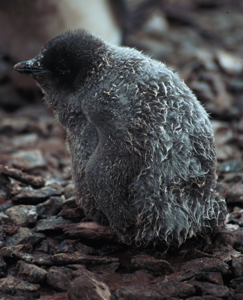
Penguins as Marine Sentinels
P. Dee Boersma
BioScience 58(7): 597-607. 2008.
Abstract
From the tropics to Antarctica, penguins depend on predictable regions of high ocean productivity where their prey aggregate. Increases in precipitation and reductions in sea ice associated with climate warming are affecting penguins. The largest breeding colony of Patagonian (Magellanic) penguins, at Punta Tombo, Argentina, had approximately 200,000 breeding pairs in October 2006—a decline of 22% since 1987. In the 1980s and 1990s, petroleum pollution was a major source of Patagonian penguin mortality. In 1994, tanker lanes were moved 40 kilometers (km) farther off the coast of Chubut, and the dumping of ballast water and the oiling of penguins are now rare. However, penguins are swimming 60 km farther north from their nests during incubation than they did a decade ago, very likely reflecting shifts in prey in response to climate change and reductions in prey abundance caused by commercial fishing. These temperate penguin species, marine sentinels for southern oceans, demonstrate that new challenges are confronting their populations.